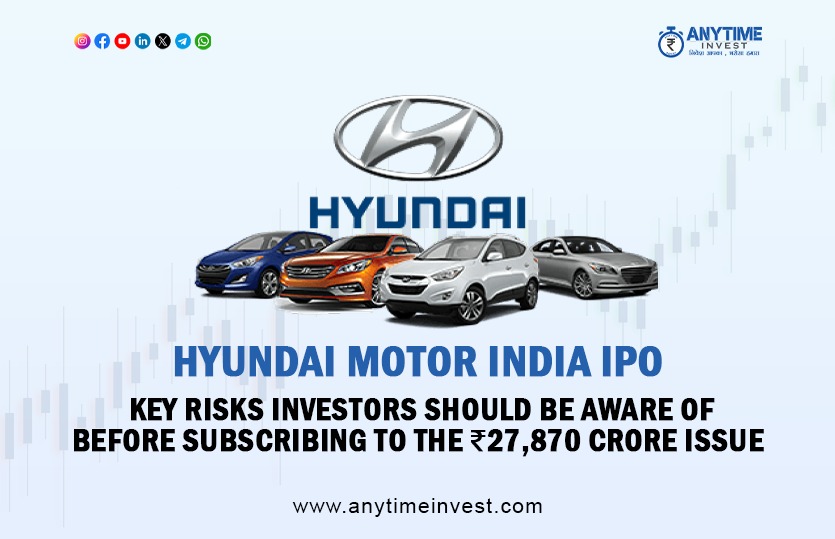
Hyundai Motor India is all set to launch one of the largest IPOs of the year, with the offering scheduled to open tomorrow. Priced between ₹1,865 to ₹1,960 per share, the IPO has an estimated issue size of a whopping ₹27,870.16 crore, catching the eye of institutional and retail investors alike. As a subsidiary of Hyundai Motor Company, Korea, Hyundai Motor India has become a dominant force in the Indian automotive sector with models like the i20, Creta, and Venue.
The IPO opens for bidding from October 15 to October 17, 2024, with a minimum investment requirement of ₹13,055 for a lot of 7 shares. This IPO also marks a significant opportunity for investors interested in the rapidly evolving automotive sector in India. However, as with any large-scale public offering, there are some inherent risks. Let’s take a look at the main points investors should consider before subscribing to the Hyundai Motor India IPO.
Potential Conflict of Interest:
Hyundai Motor India operates alongside Kia Corporation and Kia India Private Limited, which are group companies offering similar products. This overlap could lead to conflicts of interest and negatively impact Hyundai’s business.
Transactions with Group Companies:
The company’s business includes dealings with Hyundai Motor Company and other group companies, which could also pose a conflict of interest and harm the business in the long run.
Legal Challenges:
Hyundai, its subsidiaries, and promoters are currently involved in ongoing legal disputes. Any adverse rulings in these cases could negatively affect the company’s financial health, reputation, and operational performance.
Dependence on Non-Electric Vehicles:
The company’s sales are primarily focused on non-electric passenger vehicles. There’s uncertainty surrounding their ability to successfully implement their electric vehicle (EV) strategy, which could be a potential roadblock for future growth.
High Capacity Utilization:
Hyundai's current production facilities are already operating at high capacity. If the company fails to operationalize the new Talegaon production plant on time, it may struggle to meet future demand, leading to inefficiencies in manufacturing schedules and costs.
Manufacturing Constraints:
At present, all Hyundai Motor India vehicles are manufactured at the Chennai plant. Any disruptions at this facility, or delays in starting the Talegaon plant, could significantly impact production and financial performance.
Green Hydrogen Technology:
Hyundai is conducting research to create an affordable green hydrogen energy system in India. However, there is no guarantee that this technology will be economically viable, posing a risk to the company’s innovation efforts.
Government Incentives:
The company benefits from various government incentives. If these incentives are reduced or eliminated, Hyundai’s financial health and growth prospects could be significantly affected.
Intense Market Competition:
The automotive market in India is rapidly evolving and fiercely competitive. Hyundai may struggle to maintain its competitive edge, which could impact its operations negatively.
Global Economic Conditions:
As a global automaker, Hyundai Motor India is vulnerable to changes in global economic conditions, trade policies, and currency fluctuations, which could affect its profitability and growth in the Indian market.
While Hyundai Motor India’s IPO presents an attractive opportunity for investors, especially given its dominance in the Indian automotive market, potential investors should carefully consider the risks involved. Factors such as high dependence on non-electric vehicles, capacity utilization limits, and legal challenges could pose challenges to Hyundai’s future growth and profitability.
For those looking to invest in a cornerstone of India's auto sector, this IPO offers substantial potential, but like all investments, it carries its share of risks that need to be evaluated closely before making a decision.
Investors are advised to keep these risks in mind when subscribing to the Hyundai Motor India IPO and consider how the company's strategy and market conditions could evolve over time.